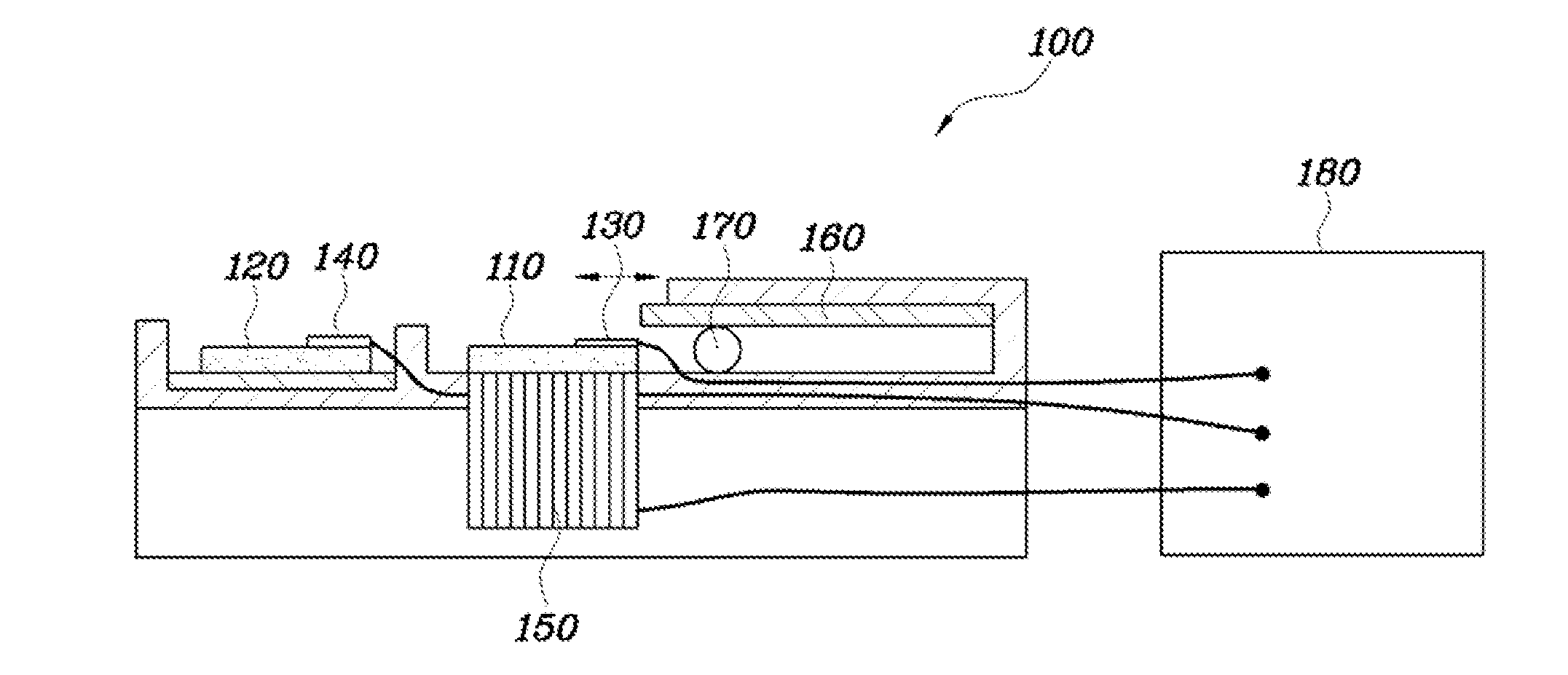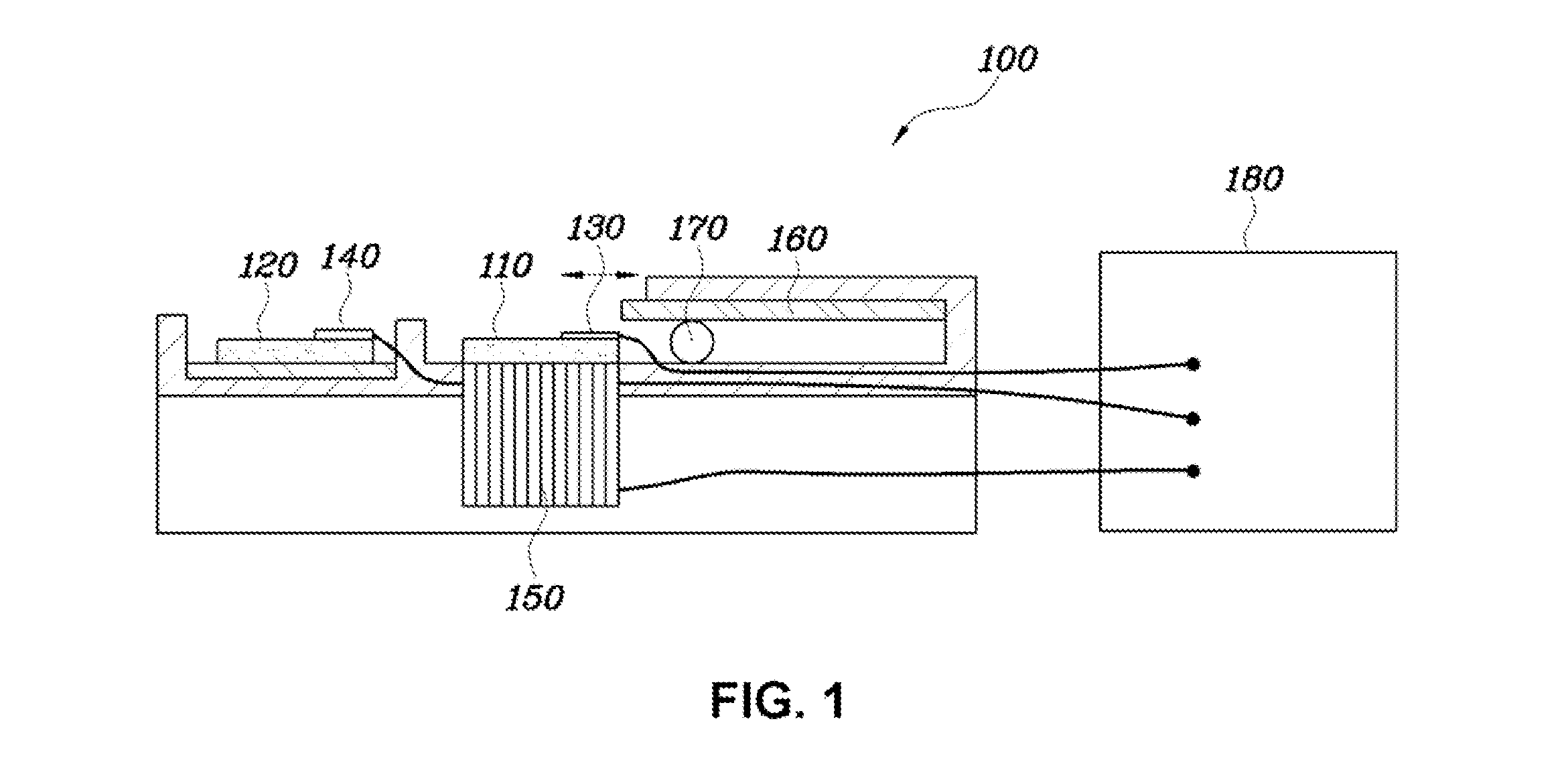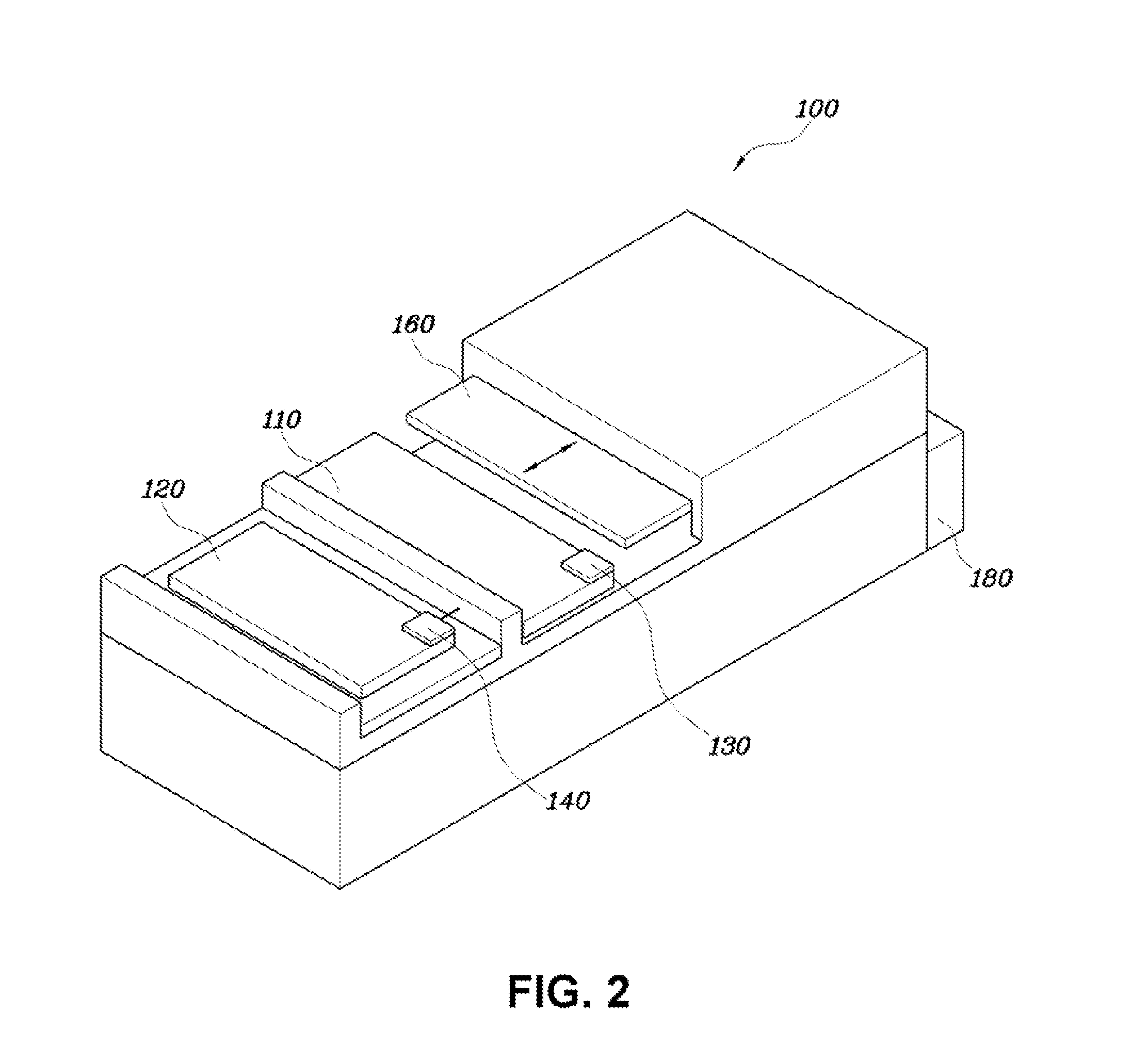Apparatus and Method for Measurement of Radiation Intensity for Testing Reliability of Solar Cell, and Method for Testing Reliability of Solar Cell
a solar cell and radiation intensity technology, applied in the direction of optical radiation measurement, semiconductor operation lifetime testing, instruments, etc., can solve the problems of low reliability of filters, difficult to measure radiation intensity, and use of radiation intensity, so as to improve the reliability of solar cell reliability testing, stable and reliable radiation intensity measurement, and high reliability of testing
- Summary
- Abstract
- Description
- Claims
- Application Information
AI Technical Summary
Benefits of technology
Problems solved by technology
Method used
Image
Examples
Embodiment Construction
[0032]Embodiments of the present invention will now be described in detail with reference to the accompanying drawings, while well-known technical portions will be omitted or abstracted for clarity of description.
[0033]Referring to FIGS. 1 and 2, an apparatus for measurement of radiation intensity 100 for testing reliability of a solar cell according to one embodiment includes a first solar cell 110, a second solar cell 120, a first temperature sensor 130, a second temperature sensor 140, a cooler 150, a cover 160, a motor 170, and a controller 180.
[0034]The first and second solar cells 110, 120 may receive a high intensity of radiation of 10 or 20 suns to generate electricity and are arranged in parallel to each other.
[0035]The first and second temperature sensors 130, 140 are disposed in the first and second solar cells 110, 120 to measure the temperature of the first and second solar cells 110, 120, respectively.
[0036]The cooler 150 is placed under the first solar cell 110 to low...
PUM
 Login to View More
Login to View More Abstract
Description
Claims
Application Information
 Login to View More
Login to View More - R&D
- Intellectual Property
- Life Sciences
- Materials
- Tech Scout
- Unparalleled Data Quality
- Higher Quality Content
- 60% Fewer Hallucinations
Browse by: Latest US Patents, China's latest patents, Technical Efficacy Thesaurus, Application Domain, Technology Topic, Popular Technical Reports.
© 2025 PatSnap. All rights reserved.Legal|Privacy policy|Modern Slavery Act Transparency Statement|Sitemap|About US| Contact US: help@patsnap.com



